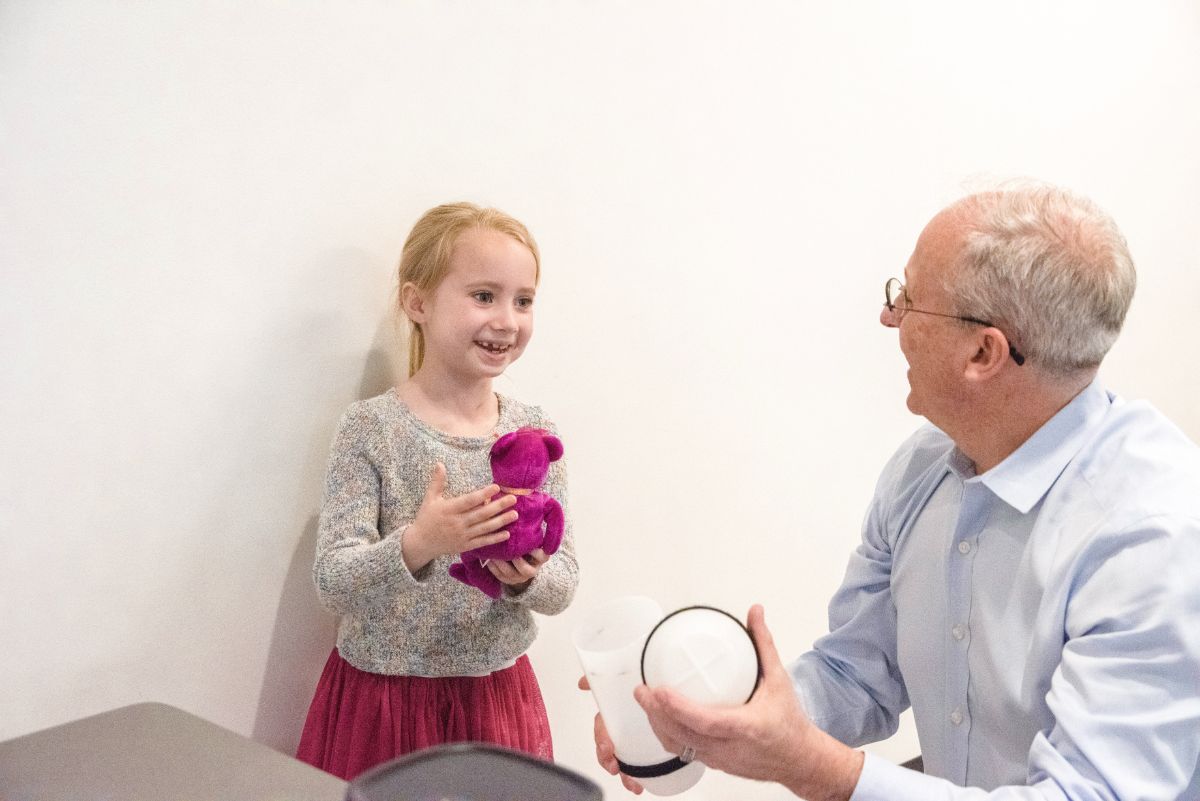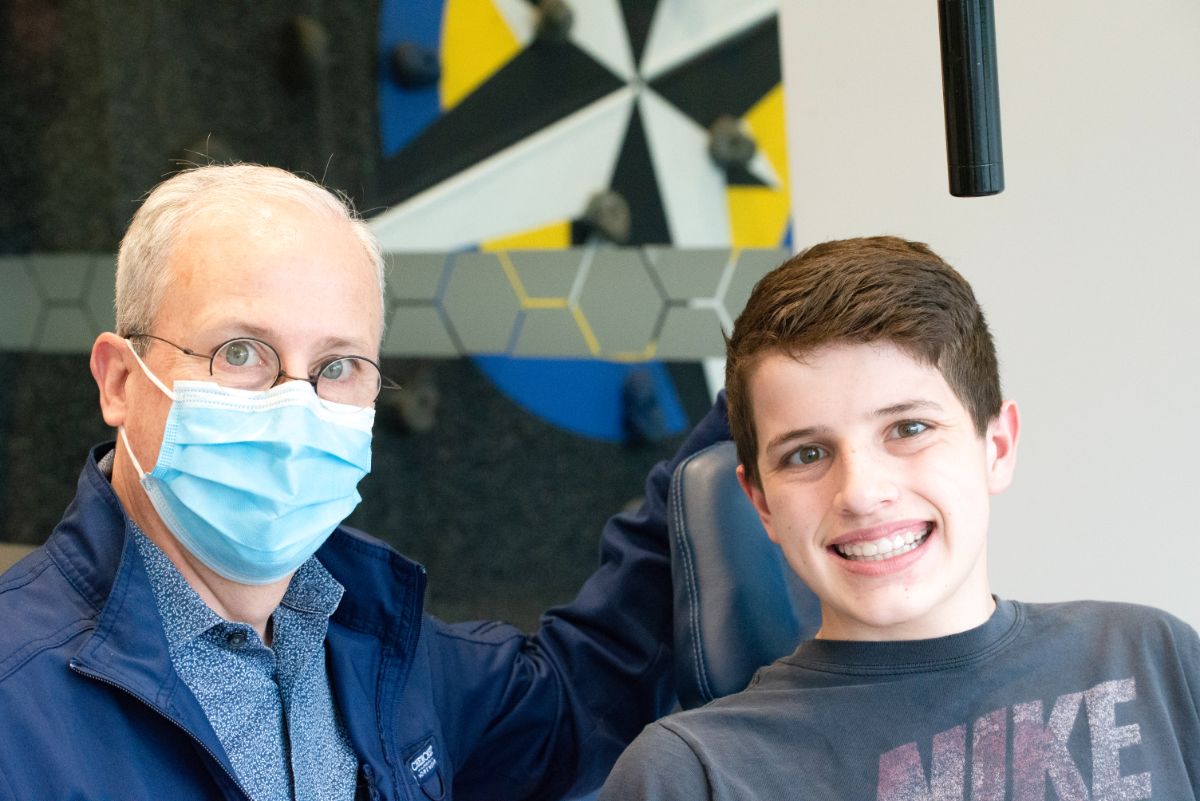Has your child been complaining about pain when they eat or discomfort when they yawn? Maybe you’ve seen them rubbing their jaw lately like it’s bothering them? If so, these could signal a problem with the jaw that needs some professional attention. While there are several possible causes for jaw pain in a child, it’s often related to a misaligned bite. The technical term for this is malocclusion, and the good news is, we can correct it with the appropriate orthodontic treatment! We’re here to help you with identifying and treating your child’s misaligned jaw.
Howard Orthodontics has helped hundreds of Lancaster County families improve their oral health. Many of the children we see in our Willow Street office are dealing with a misalignment of their teeth and jaw that’s causing some jaw pain and other problems. One way we’re able to catch these issues is early childhood evaluations. These are such a fantastic tool that the American Association of Orthodontists actually recommends every child have one by the time they’re about seven years old to ensure their bite is developing properly.
If you suspect your child is dealing with some misalignment, we’d love to meet you both and take a look at their smile! During this visit, Dr. Howard will perform an oral examination and assess your child’s teeth and jaw while keeping an eye out for several common issues. To understand more about what these conditions entail and how they can affect your child’s smile, keep reading below!
Crowded teeth
Good dental hygiene is essential for maintaining oral health, but crowded teeth can interfere with this by making brushing and flossing more difficult. For this reason, children with crooked teeth are sometimes more likely to develop tooth decay, cavities, and other dental problems.
Gapped teeth
Gaps in teeth are very common in childhood and can occur for a variety of reasons. These may include genetics, thumb sucking, and extended use of a bottle or pacifier. If your child has a bit too much space between their teeth, our expert team will be able to identify any underlying causes and address them if necessary.

Missing teeth
Some children have a gap in their smile because of congenitally missing teeth, while others may have lost permanent teeth due to injury or disease. Whatever the cause, cases involving missing teeth can benefit from orthodontic appliances like braces. These move the existing teeth into the proper positions. At that point, a dentist can place a bonded bridge or implant to fill the gap formed by the missing tooth.
Open bite
With an open bite, the upper and lower rows of the front teeth don’t touch or close when smiling or chewing. Many open bite cases come from extended thumb sucking in childhood, which can cause the teeth to grow into a noticeably rounded formation.
Deep overbite
When a child has a deep overbite, the lower teeth recede so far behind the upper teeth that they bite into the roof of the mouth. The upper front teeth also overlap the lower front teeth. Out of all the bite disorders, this one is most detrimental to the teeth and health of the jaw joints. It can also have an impact on the shape and appearance of a child’s face.
Underbite
An underbite occurs when the bottom teeth protrude in front of the upper teeth. This type of bite misalignment can cause pain at the jaw joint and the angled pressure can wear down some of the front teeth, which can be uncomfortable and sometimes even painful.
Overjet
You’ve probably heard overjets referred to as “buck teeth” before! This occurs when the top front teeth protrude far beyond the bottom front teeth. It’s most effectively treated when diagnosed early, as this allows us to use the child’s growth to our advantage and guide the eruption of their permanent teeth.
Treating your child’s misaligned jaw
Your child’s smile is as unique as they are, and you’ll never find any cookie-cutter treatment at our practice! Dr. Howard will create a customized treatment plan based on your child’s specific needs, lifestyle, and goals. This plan may include one or more orthodontic appliances, which is something we’ll discuss with you in detail during their evaluation. We’re proud to offer patients the following treatment options.
Metal braces
Metal braces are one of the most recognizable symbols of orthodontics, and also the most common type of treatment. The brackets are made of a mix of stainless steel and other high-quality metals, making them very durable and long-lasting. Modern metal braces are also much more comfortable and lighter than they used to be! They deliver excellent results and can be especially useful in cases that are more severe or complicated.
Clear braces
Also known as ceramic braces, clear braces work in the same way metal braces do but have the added benefit of semi-translucent ceramic brackets. While clear braces are about the same size and shape as metal braces, they’re able to better blend in with a patient’s natural smile for a more subtle straightening option. This is especially true when they’re paired with clear, white, or tooth-colored wires and elastic ties! While ceramic braces are strong, metal braces can tolerate more pressure and may be a better option for younger patients.
Invisalign clear aligners
Instead of brackets and wires, the Invisalign system uses a series of clear removable aligners to move teeth into the desired positions over time. This is accomplished by wearing them 20-22 hours per day and replacing them every 1-2 weeks for the next aligner in the system. Invisalign offers patients a bit more freedom and flexibility than other treatment options do, thanks to the removability of the aligners! This means no food restrictions and an easier time brushing and flossing. We offer both Invisalign and Invisalign Teen systems.

Get your child’s smile off to a great start with Howard Orthodontics
Correcting a misaligned bite is an effective solution for preventing and eliminating jaw pain. Treatment can benefit your child in many other ways as well, including:
- a reduced risk of tooth decay and cavities
- improved speech
- a reduced risk of chipped or lost teeth
- improved oral function
- increased self-confidence
- an easier time eating, sleeping, and breathing
With a variety of effective and affordable treatment options available, it’s never been easier to help your child’s smile get the best start possible! If you’d like to learn more about how Dr. Howard can identify and treat jaw pain in children, get in touch today to schedule a FREE consultation in our Willow Street office!
